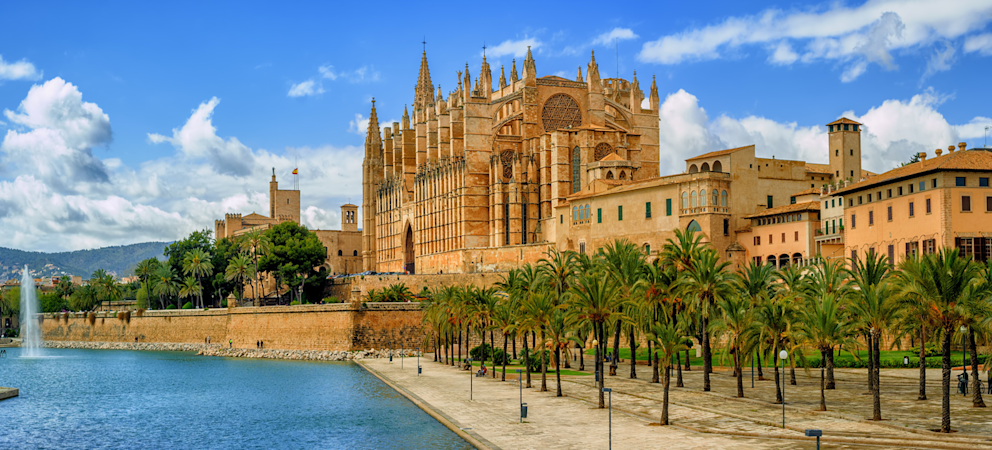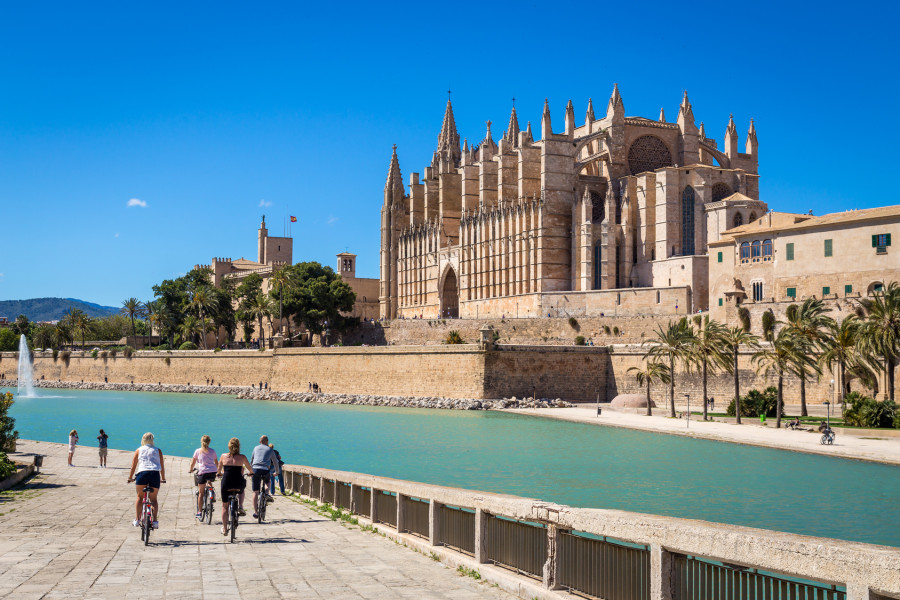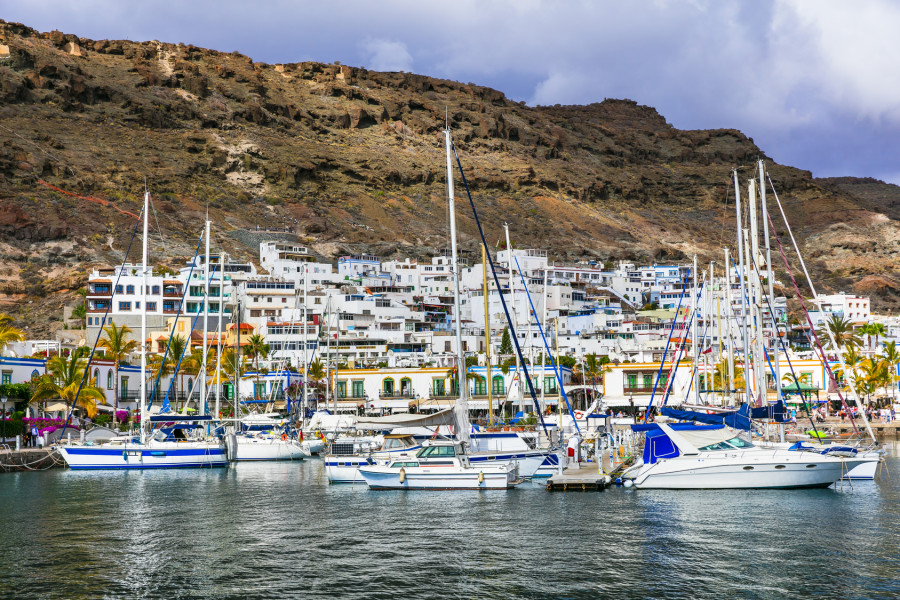
Living in Mallorca
Of course, life in Spain doesn’t just mean the mainland. The island of Mallorca is a Mediterranean gem! It has everything from long sandy beaches and pristine golf courses to a rich variety of cultural attractions and pulsating big city life. Whether you want a farmhouse on the side of a mountain or an apartment in the heart of a resort, Mallorca can provide you with an attractive home and a fantastic quality of life.
Of course, living on an island - the largest of the Balearics - means that you have to fly or take a boat to leave it, but Mallorca is very well connected and once you get settled it’s likely that, as many writers and artists have discovered, you won’t be in a rush to go anywhere.
Living in Mallorca is sure to deliver your personal version of the perfect Mediterranean lifestyle, with spectacular mountains, open plains, buzzing beach resorts and sleepy rural villages and of course spectacular beaches and crystal clear blue water waiting for your arrival.
ISLAND LAYOUT AND WHERE TO LIVE IN MALLORCA
Whether you arrive by air into Palma airport or by boat to Alcúdia in the opposite corner of the island, you can clearly see the topography of Mallorca, which is manageably-sized at 3,600km2 and only takes an hour and a half to drive across.
The rugged west coast has the defiant Serra de Tramuntana mountain range with its towering cliffs, dramatic views and the town of Sóller/Port de Sóller at its heart, waiting to reward those willing to explore or set up home somewhere with a unique character.
The mountains slope down to the central plain, after which you can take your pick of beautiful beaches, all kinds of resorts and a range of developments, towns and villages to call home.
Most will choose the coast, although the centre of the island provides opportunities for affordable rural living, still within easy reach of perfect beaches and the capital.
Palma, Andratx and Port Andratx are coastal centres of tourism and permanent living in southeastern Mallorca. Santanyí is a popular southern location, while the hilltop towns of Artà and Capdepera lead around to the northeastern wonders of Pollensa and Port de Pollensa.
The property market in Palma de Mallorca
In the year to January 2020 average property prices in Palma de Mallorca rose 5.5% to €2,977/m2 with a rise of 57% in the past 5 years.
The number of transactions in 2019 is up over 40% compared 2014, but they are down 18% on 2019 and still 28% below the booming levels of 2007 when almost 5,00 transactions were registered.
More than 30 million passengers arrived in Mallorca by air in 2019, including around 13 million tourists, which proves the island’s appeal as a holiday destination, but also demonstrates the high volume of non-tourist passengers.
(Sources: Idealista, Aena. Spain National Institute of Statistics, Spanish Ministry or Development, Spanish Land Registry)
Entertainment
Living in Mallorca means embracing the outdoor lifestyle, whether you’re hiking, climbing or cycling in the Tramuntana mountains, playing tennis, golfing or enjoying a gentle swim and snorkel in a secluded picture postcard cove.
Like most Spanish regions, the calendar of festivals is rich and varied, with colourful and chaotic Carnival festivities leading the way at the beginning of the year. Palma and its neighbours such as Magaluf form the party centre of the island, while other resorts also offer their own take on frenetic fun long into the early hours.
Residents benefit from the facilities set up to cater for the tourist trade, from theme parks to sailing trips, and from walking tours to cooking courses. When all the energetic pursuits are finished, a variety of spas and wellness clinics are happy to pamper you back to perfection.
LIVING IN MALLORCA - EVERYDAY LIFE
Living in Mallorca offers generally lower costs of living compared to many European countries. Its compact dimensions and limited housing supply help to support property prices, but a full range of homes are available, from luxury villas and apartments in seaside towns and developments to houses in sleepy village squares and rural clifftop retreats.
Getting around
Residents of Mallorca benefit from the infrastructure built to serve the tourist industry, including great roads across the island, extensive air and sea connections and a cosmopolitan capital with a buzzing harbour and good public transport links.
Health
The Spanish health service is excellent and free for residents. Healthcare in Mallorca is a part of this, along with a pharmacy culture that provides professional advice as well as prescriptions. The state-of-the-art Son Espases hospital and Hospital de Inca service both sides of the island.
Education
Education in Mallorca is also of a high standard, with a wide choice of local public schools, and a number of international schools, most of which are found in the Palma area. The British curriculum is taught, and residents can also choose schools that fit the French, German and Scandinavian systems.
Cool things to do in Mallorca
• Rent a car and explore every corner of the island
• Take a walking tour of Palma
• Pick up some delicacies in the historic Mercat de Santa Catalina
• Visit working Mallorca at the fishing port of Cala Figuera
• Go hiking in the Tramuntana mountains
• Get a unique perspective on the coastline with a boat trip
• Discover historic Mallorca at the Cuitat Romana de Pollentia
• Drive up to the Cap de Pera lighthouse
• Chill out at the Palma Ice Bar
• Wing it to the Ostrich farm in Campos
• Hit the treetops for an adventure at Jungle Parc, Santa Ponsa
• Drink in the sunset from a hot air balloon
• Cycle up the Sa Calobra road, then roll back down for a swim
• Be artistic at the Pilar and Joan Miró Foundation
• Count the Moorish terraces down to the beach at Banyalbufar
There is so much to Mallorca – speak to our expert local team to find out more.



